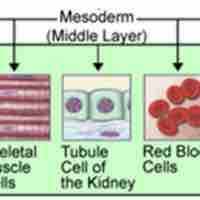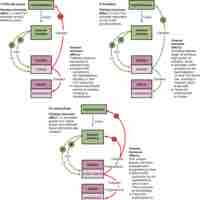Chapter 43
Animal Reproduction and Development
By Boundless
Animal reproduction is essential to the survival of a species; it can occur through either asexual or sexual means.
Asexual and sexual reproduction, two methods of reproduction among animals, produce offspring that are clones or genetically unique.

Sex determination in animals may be regulated by the presence of chromosomes or through the impact of an environmental factor.
External and internal fertilization are forms of reproduction that vary in method and embryo development.
Sexually-reproducing organisms have evolved specialized gonads, along with a variety of ways to transfer sperm during reproduction.
The male reproductive system is a series of organs and glands that produce sperm, fluids, hormones, and enable the ejaculation of sperm.
The female reproductive structures produce eggs, support a growing embryo, and provide a birth canal to the fetus.
Spermatogenesis and oogenesis are both forms of gametogenesis, in which a diploid gamete cell produces haploid sperm and egg cells, respectively.
In fertilization, the sperm binds to the egg, allowing their membranes to fuse and the sperm to transfer its nucleus into the egg.
A zygote undergoes rapid cell divisions (cleavage) to form a spherical ball of cells: the blastula; this will further develop into a blastocyst.

During organogenesis, the three germ layers of the embryo differentiate and further specialize to form the various organs of the body.
Through the expression patterns of different genes, the three axes of the body are established, aiding in tissue and organ development.
Once the zygote implants in the uterine wall, embryonic and fetal development continue through three trimesters to birth.

Labor and birth are divided into three stages: the dilation of the cervix, the delivery of the baby, and the expulsion of the placenta.
Contraception, also known as birth control, is methods used to prevent pregnancy; some of these methods are more successful than others.
Infertility, or the ability to conceive, can be treated by assisted reproductive technologies which can aid conception.
